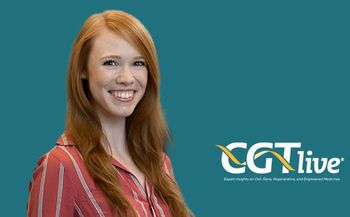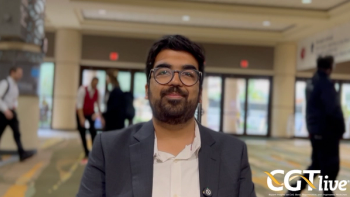
Most Patients With β-Thalassemia Achieve Transfusion Independence With Exa-Cel Therapy
Exa-cel was recently approved for treating sickle cell disease under the name Casgevy.
The CLIMB THAL 111 trial met its primary endpoint of achieving transfusion independence for 12 continuous months (TI12) in patients with transfusion-dependent β-thalassemia treated with
Updated data from CLIMB 111 were presented at the
“We observed transfusion independence in most patients given exa-cel... Rapid, robust, and durable increases in total hemoglobin is associated with pancellular distribution of fetal hemoglobin... Stable allelic editing in b one marrow and peripheral blood demonstrate a durable benefit for the patient and the safety profile is consistent with myeloablative busulfan conditioning and autologous transplantation. There was no difference between efficacy profile and safety between the adults and the adolescents,” Locatelli said during his presentation.
As of the January 16, 2023, cutoff date, 52 participants with both β0/β0 and non-genotypes have been infused in CLIMB THAL-111. These patients had a mean age of 21.5 years (standard deviation [SD], 6.7) and over half (n = 31) had a β0/β0 or β0/β0-like genotype. Patients had a historical mean of 36.0 (range, 11-71) red blood cell (RBC) transfusions per year.
WATCH NOW:
“At the end of this study, participants are offered to enter into the long-term follow-up study for 13 additional years, the CLIMB 131 study,” Locatelli said during his presentation.
Most patients needed 1 cycle of mobilization and the mean dose was 8.4 (range, 3.0-19.7) x 106 CD34- cells/kg. The median time to neutrophil engraftment was 29.0 days (range, 12-56) and 44.0 days (range, 20-200) to platelet engraftment.
Investigators found that 91.4% of patients (n = 32) in the efficacy set reached TI12 (95% CI [76.9-98.2]; P <.0001) which has lasted for a mean of 22.5 months (range, 13.3-45.1).Transfusions were stopped after a mean of 35.2 days and all patients that achieved TI12 have remained transfusion independent. The 3 patients who did not achieve TI12 stopped transfusions at 14.5, 12.2, and 21.6 months after infusion and were transfusion-free for 10.3, 7.0, and 2.8 months, respectively. One of these participants had an 83.9% reduction in annualized RBC transfusion and 2 others have been transfusion free for 7.3 and 4.0 months as of the data cutoff date.
Locatelli and colleagues have seen consistent efficacy across adolescents and adults with TDT in terms of time without RBC transfusion and total hemoglobin and fetal hemoglobin. Investigators also found durable bo9ne marrow and peripheral blood allelic editing through follow-up time, which may indicate a long-term meaningful benefit after exa-cel infusion.
Patients also recorded substantial and clinically meaningful improvements across all instruments measuring quality of life and all domains, including general health, physical, emotional social functional wellbeing, and bone marrow transplantation.
The safety profile was consistent with autologous transplantation after myeloablative conditioning. There were no patient deaths or malignancies. There were 5 cases of venooccclusive disease that required intensive ventilation or dialysis which resolved after treatment. Adverse event frequency decreased over time, with most occurring within the first 3 months after treatment.
“All in all, these data suggest that exa-cel has the potential to provide a one-time functional cure to patients with TDT,” Locatelli concluded.
REFERENCE
Locatelli F, Lang P, Wall D, et al. Exagamglogene autotemcel for transfusion-dependent β-thalassemia. Presented at: 2023 ASH Annual Meeting & Exposition, December 9-12; San Diego, California. Abstract #1053
Newsletter
Stay at the forefront of cutting-edge science with CGT—your direct line to expert insights, breakthrough data, and real-time coverage of the latest advancements in cell and gene therapy.

















































